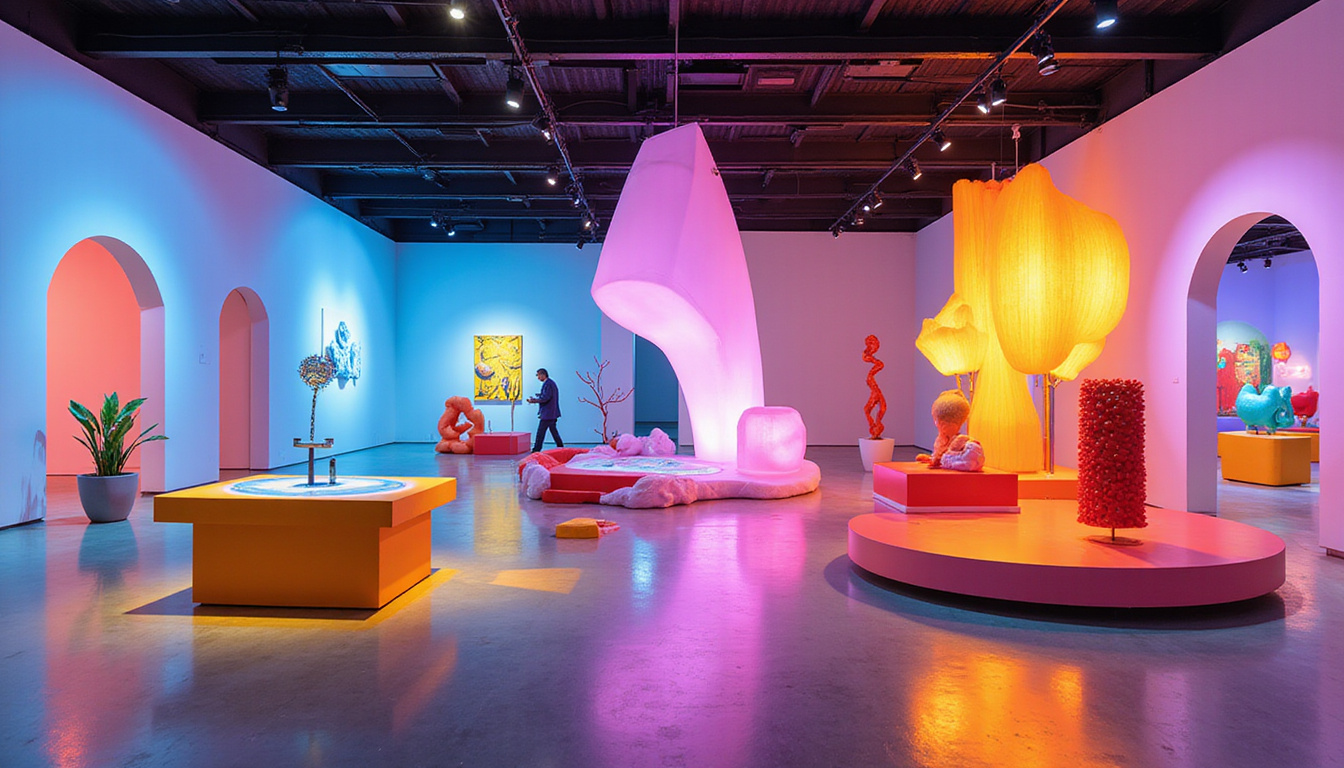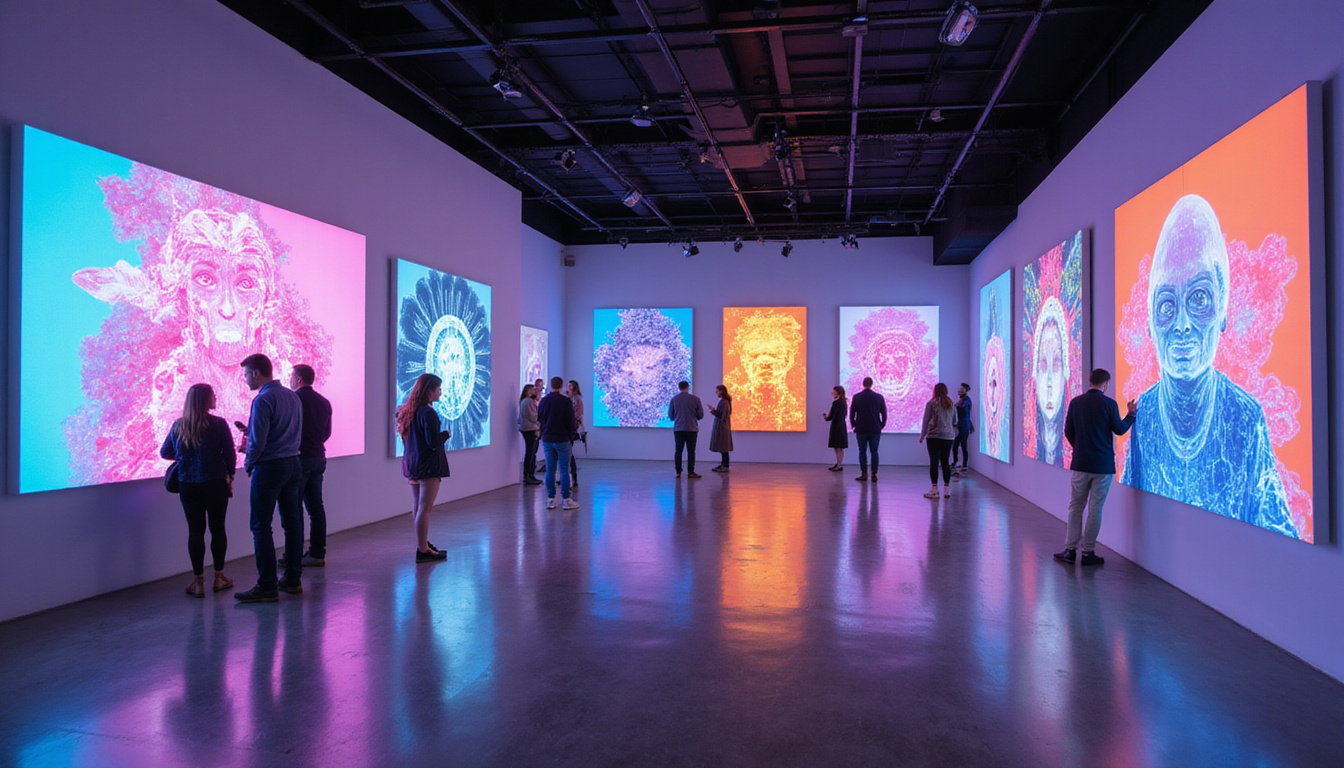
Exploring the Most Captivating Art Installations That Redefine Creativity
Art installations have long served as a captivating medium for artists to express their creativity and communicate messages that resonate with audiences. From grand sculptures that reshape public spaces to intimate setups that invite personal reflection, these works go beyond traditional art forms, merging visual, auditory, and even tactile elements to create immersive experiences. In this blog, we’ll journey through the evolution of art installations, highlighting notable contemporary examples and exploring their profound impact on society. Let’s dive into how these extraordinary creations not only redefine creativity but also challenge our perceptions and inspire dialogue in our ever-changing world.

TLDR (Key Takeaways)
- Art installations have transformed the way we perceive and interact with art.
- Historical context reveals how art installations have evolved alongside societal changes.
- Contemporary art installations often challenge traditional boundaries of creativity and expression.
- Interactive and immersive experiences in art installations engage audiences on a deeper level.
- The future of art installations will likely continue to innovate and reflect social issues.
Introduction to Art Installations
Art installations have become a prominent feature in modern interior design, transforming ordinary spaces into captivating environments that tell a story or evoke emotion. These immersive experiences go beyond mere wall decor; they engage the viewer and create a unique atmosphere that reflects personal taste and style. Whether you're aiming to establish a focal point in your home or enhance a particular theme, incorporating art installations can significantly elevate your living space. They not only contribute to the aesthetic appeal but also foster conversation and provide a glimpse into your personality and values. In South Africa, where diverse cultures and artistic expressions flourish, art installations can seamlessly blend with both contemporary and traditional decor styles, making your home a vibrant showcase of creativity.
The Evolution of Art Installations through History
Art installations have undergone a remarkable transformation throughout history, reflecting the evolving trends in artistic expression, cultural movements, and technological advancements. Originating from traditional forms of art, such as painting and sculpture, installations began to take on a more immersive and experiential quality in the late 20th century. This shift toward three-dimensional, site-specific works allowed artists to interact with viewers in ways that static art forms could not. In the 1960s and 1970s, art installations emerged as a powerful medium for confronting social issues, with notable movements such as Land Art and Conceptual Art challenging conventional boundaries. Artists like Robert Smithson and Chris Burden created large-scale installations that often engaged the environment and the audience, inviting observers to contemplate their relationship with the space. As we progressed into the 21st century, technology further propelled the evolution of art installations. Today, digital installations utilizing projections, virtual reality, and interactive elements offer audiences a deeply immersive experience. From the minimalistic installations of the mid-20th century to the cutting-edge, tech-infused works we see now, the progression of art installations reflects our continual quest for deeper meaning and engagement in art. They have become more than just decorative pieces; they provoke thought, inspire conversation, and encourage viewers to participate in a shared experience. As we move forward, the evolution of art installations continues to mirror societal changes, making it a dynamic and exciting facet of the art world.
'Art is never finished, only abandoned.' - Leonardo da Vinci
Notable Contemporary Art Installations
Contemporary art installations have become a vibrant part of our cultural landscape, offering immersive experiences that engage both the mind and senses. From sprawling outdoor landscapes to intimate indoor galleries, art installations challenge traditional boundaries and invite viewers to interact with the work in transformative ways. In South Africa, notable installations often reference the rich tapestry of local history and diverse cultures, making them not only visually striking but also deeply resonant. Projects like the 'The Forest of Wishes' in Johannesburg, which encourages visitors to leave behind messages of hope, or Cape Town's 'The Wave', a large-scale piece that mimics the sea's ebb and flow, highlight how art installations can serve as reflections of societal themes and personal narratives. These pieces are not merely decorations; they create dialogue and provoke thought, making them essential components of both public and private spaces. Whether you're curating that perfect wall in your home or contemplating your next gallery visit, consider how art installations can enrich your environment and spark conversations.

Interactive and Immersive Experiences in Art
Art installations have evolved beyond traditional forms of expression, captivating audiences through interactive and immersive experiences. Artists today are crafting environments that encourage viewer participation, transforming formerly passive observers into active participants in the art itself. Whether it's a room filled with light projections or a mural that invites you to step into its scene, these installations create a multi-sensory realm that resonates deeply. Engagement through Participation: Art installations invite individuals to engage physically and emotionally with the artwork. This interaction can take numerous forms, such as walking through a maze of hanging fabric, interacting with digital displays, or even contributing to a community art piece. Such engagement fosters a sense of ownership and connection, making the experience memorable. Technological Innovations: The growth of technology has significantly influenced art installations, resulting in groundbreaking experiences that combine visual art with digital elements. Virtual reality (VR) and augmented reality (AR) are pushing boundaries, allowing viewers to experience art in previously unimaginable ways. These tools not only enhance the aesthetic appeal but also amplify storytelling, immersing participants in narratives that challenge their perceptions. Local Impact: In South Africa, artists are harnessing this medium to reflect societal issues, using interactive installations to spark dialogues on culture and history. These local narratives resonate with viewers, offering insights into the rich tapestry of South African life through the lens of contemporary art. Adopting art installations in your space could inject creativity and uniqueness into your decor, but beyond aesthetics, they can also enrich your atmosphere, creating a backdrop for conversations and inspiration.
The Impact of Art Installations on Society
Art installations have long served as more than mere decorative elements; they are powerful mediums that engage the public, spark dialogue, and reflect societal values. When strategically placed in public spaces or galleries, art installations can provoke thought, evoke emotion, and foster a sense of community. They challenge viewers to reconsider their perspectives and engage with a variety of social issues, from environmental awareness to cultural identity. Moreover, the immersive nature of many contemporary art installations allows for an experiential understanding that traditional forms of art may not convey. For instance, large-scale installations often invite audience participation, encouraging individuals to interact and form personal connections with the artwork. This democratization of art serves to make it accessible, breaking down barriers between artists and audiences. In South Africa, art installations also play a role in addressing the country's unique history and socio-political landscape. Artists utilize public spaces to comment on and interpret narratives that resonate with local communities, fostering a deeper cultural understanding. From vibrant murals to thought-provoking sculptures, these installations can stimulate conversation and inspire change within society. Ultimately, art installations enrich our surroundings and have the potential to unite people, highlight important issues, and inspire future generations.
Frequently Asked Questions
What are art installations?
Art installations are large-scale, mixed-media constructions that are often designed to transform a specific space and engage the viewer in a unique experience. They can incorporate various materials, technologies, and artistic expressions.
How have art installations evolved over time?
Art installations have evolved from traditional forms of art towards more interactive and immersive experiences. Historically, they began as theatrical presentations and sculptures but have now integrated advanced technology, performance art, and audience participation.
What are some notable contemporary art installations?
Notable contemporary art installations include Yayoi Kusama's 'Infinity Mirrored Room,' Christo and Jeanne-Claude's 'The Gates,' and Olafur Eliasson's 'The Weather Project.' Each of these works challenges viewers' perceptions and engages them on various levels.
How do interactive installations engage the audience?
Interactive installations invite viewers to participate, often allowing them to manipulate elements of the work or influence the outcome of the experience. This active participation fosters a deeper connection between the audience and the art.
What is the societal impact of art installations?
Art installations can provoke thought, inspire dialogue, and promote social change. They often address pressing issues, reflect cultural narratives, and encourage community engagement, making them powerful tools for social commentary.
















